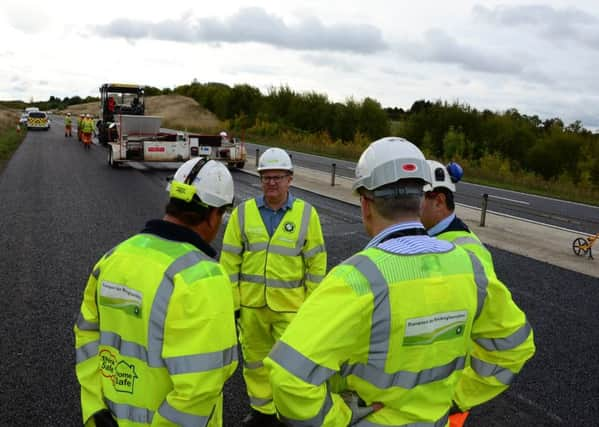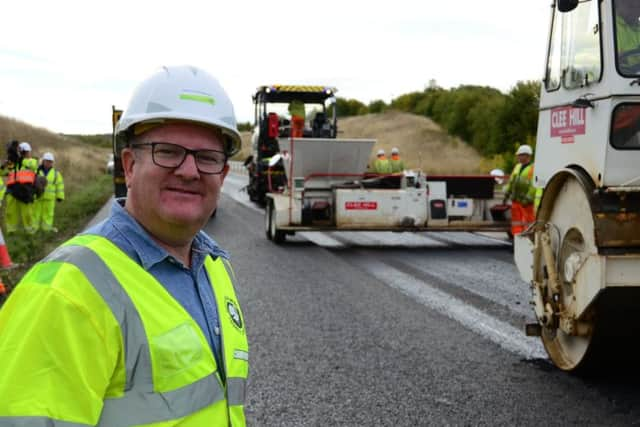The Stoke Hammond bypass reopens after £4.5 million surfacing scheme


The A4146, which bypasses western Linslade and Stoke Hammond village, has undergone resurfacing over the past eight weeks, at a cost of £4.5 million.
Buckinghamshire County Council’s Deputy Leader and Transport Cabinet Member, Mark Shaw, was delighted with the work, which involved up to three surfacing teams on the five-mile dual carriageway.
Advertisement
Hide AdAdvertisement
Hide AdHe said: “Spending £4.5m on this surfacing project confirms our commitment to invest in Buckinghamshire’s roads.


“We’re making good progress in improving roads across the county, and we’re spending around £25m this year, but with little financial input from Government, our pace is slower than I would like. However, the Stoke Hammond bypass is a major step forward.”
During the eight-week project, the teams laid around 25,000 tonnes of surfacing material, over 140,000 square metres of road - the equivalent area of 13 football pitches.
The original road surface was a Thin Surface Course System, compliant with national specifications at the time. TSCS has voids within its structure, which allow water and air in, and thus provides a quieter surface than traditional coverings, however it proved more porous than expected, so water penetration into the layer beneath reduced the stiffness of the road.
Advertisement
Hide AdAdvertisement
Hide AdThe surfacing teams have removed the entire original surface course, which had a number of surface defects, and, in areas where investigations found structural weakness, replaced some of the lower layers.
The new surface - hard-wearing hot rolled asphalt with chippings - is impermeable, and will seal the structure of the road and extend its useful life.
Some of the bypass soft verge areas have been stiffened using recycled ‘planings’ from the old surface, which will aid drainage.
While the bypass was closed, other teams took the opportunity to clear litter, maintain lighting and safety barriers, clean road signs, clear drains and central reservation debris, and cut back foliage.
Advertisement
Hide AdAdvertisement
Hide AdDuring the resurfacing the county council provided signed diversion routes, and worked to ensure traffic flows were maintained, however, local self-diversions generated one or two concerns, and there were one or two concerns about lorries on local roads; which the county council handled individually, and they introduced additional direction signage where necessary.
Mark Shaw added: “This is Buckinghamshire’s biggest resurfacing scheme for many years, and my thanks go to the team who made it all happen - a great feat of planning and execution.
“My thanks, too, to those who normally use the bypass, for bearing with us! We have a great new road surface that will make journeys more comfortable.”